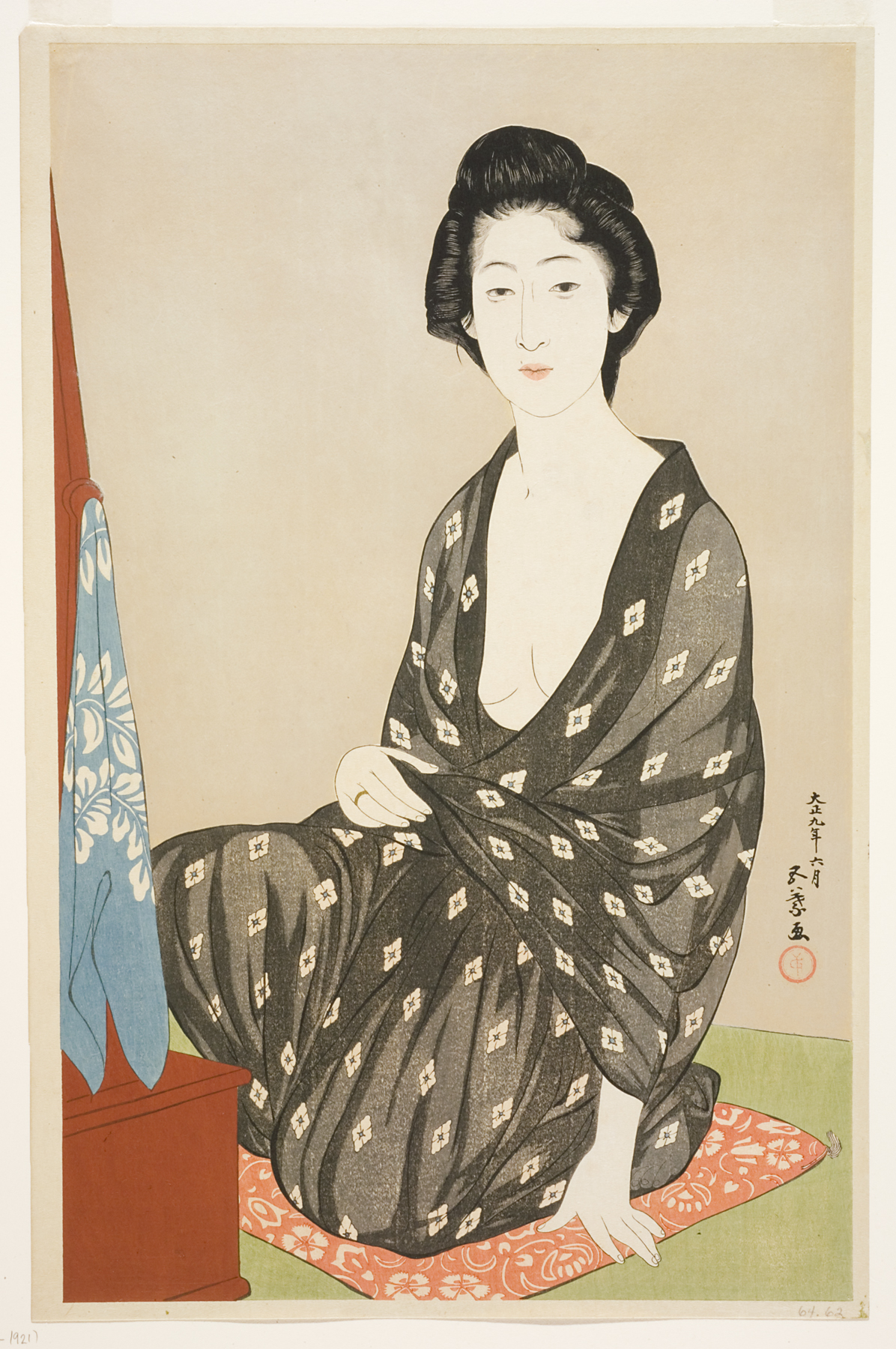Woman kneeling before mirror, Hashiguchi Goyō
Artwork Overview
Hashiguchi Goyō, artist
1880–1921
Woman kneeling before mirror,
1920, Taisho period (1912–1926)
Where object was made: Japan
Material/technique: mica; color woodcut
Dimensions:
Image Dimensions Height/Width (Height x Width): 438.2 x 276.2 mm
Image Dimensions Height/Width (Height x Width): 17 1/4 x 10 7/8 in
Mat Dimensions (Height x Width): 25 x 20 in
Image Dimensions Height/Width (Height x Width): 438.2 x 276.2 mm
Image Dimensions Height/Width (Height x Width): 17 1/4 x 10 7/8 in
Mat Dimensions (Height x Width): 25 x 20 in
Credit line: Gift of Mrs. Arthur S. Johnson (The May Finney Marcy Collection)
Accession number: 1964.0062
Not on display
If you wish to reproduce this image, please submit an image request





